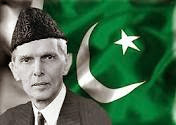
Translate
mr. jinnah

important links
Radio Pakistan is official radio station and some others private FM radio stations are broadcasting their transmission in different cities of Pakistan.
Zong is an other cellular company, that is working in Pakistan and it was established in 2008. A first international step for China Mobile, Zong aims at touching the lives of all Pakistanis! We serve to inspire and empower the people of Pakistan with innovative technology that keeps pace with today's fast evolving culture.
My Blog List
Thursday 21 May 2015
St. Joseph's Hospice is a Shelter for Helpless People.

Sunday 17 May 2015
Radio is very important part and source of Information Technology

Friday 1 May 2015
Culture of India
.jpg)
Contact
NADRA
NADRA is one of the leading System Integrators in the global identification sector and boasts extensive experience in designing, implementing and operating solutions for corporate and public sector clients. NADRA offers its clients a portfolio of customizable solutions for identification, e-governance and secure documents. NADRA has successfully implemented the Multi-Biometric National Identity Card & Multi-Biometric e-Passport solutions for
MOBLINK GSM
PIA
PIA is the official Airline and some other private airlines Airblue, Air Indus and Shaheen Air also working in Pakistan and PIA fleet include different aircraft like Airbus 310, Being 777, being 747 and being 737. On 11th of March, 1955, government of Pakistan founded Pakistan International Airline to merge Orient Airways and other airlines into PIA. Your comfort and convenience mean the world to us. Business Plus Lounges will serve you at all international and major domestic stations where you can sit back and relax. For the comfort of Business Class passengers at Karachi, Lahore, and Islamabad airports, PIA has its own exclusive Business Plus Lounges. Our hospitable staff will ensure that you're well looked after during your stay with us at the airport. PIA's Business Plus Lounges are equipped with the latest magazines and newspapers, Internet access, cable television, and snacks, so you can enjoy the best of Pakistani traditions in a modern, comfortable environment.
STATE BANK OF PAKISTAN
SUPARCO
PAKISTAN SPACE AND UPPER ATMOSPHERE RESEARCH COMMISSION
Pakistan Space and Upper Atmosphere Research Commission (SUPARCO), the national space agency, was established in 1961 as a Committee and was granted the status of a Commission in 1981. SUPARCO is mandated to conduct R&D in space science, space technology, and their peaceful applications in the country. It works towards developing indigenous capabilities in space technology and promoting space applications for socio-economic uplift of the country.
pakistan post
Pakistan Post Office is one of the oldest government departments in the Sub-Continent. In 1947, it began functioning as the Department of Post & Telegraph. In 1962 it was separated from the Telegraph & Telephone and started working as an independent attached department. Pakistan Post is providing postal services in every nook and corner of the country through a network of around 13,000 post offices. Pakistan Post is providing delivery services to about 20 million households and businesses as community service without any cost considerations. In addition to its traditional role, the Pakistan Post also performs agency functions on behalf of Federal and Provincial governments, which inter-alias include Savings Bank, Postal Life Insurance, Collection of Taxes, Collection of Electricity, Water, Sui Gas and Telephone bills.
IMMIGRATION & PASSPORT
The Office of DG. (Immigration and Passport) is an attached department of Ministry of Interior, responsible to deal with the matters concerning issuance of Passports, Visas, Pakistan Citizenship and Renunciation of Pakistan Citizenship Certificates. This website will guide you about the processes for acquiring these documents.
Search This Blog
Flag of Pakistan

important universities of pakistan
- ALLAMA IQBAL OPEN UNIVERSITY ISLAMABAD
- BAHAUDDIN ZAKARIYA UNIVERSITY MULTAN
- BAHRIA UNIVERSITY ISLAMABAD
- INTERNATIONAL ISLAMIC UNIVERSITY ISLAMABAD
- LAHORE UNIVERSITY OF MANAGEMENT SCIENCES
- NATIONAL UNIVERSITY OF SCIENCES & TECHNOLOGY
- QUAID- I -AZAM UNIVERSITY ISLAMABAD
- THE AGA KHAN UNIVERSITY KARACHI
- UNIVERSITY OF AGRICULTURE FAISALABAD
- UNIVERSITY OF BALOCHISTAN QUETTA
- UNIVERSITY OF ENGINEERING & TECHNOLOGY LAHORE
- UNIVERSITY OF KARACHI
- UNIVERSITY OF PESHAWAR
- UNIVERSITY OF THE PUNJAB
- VIRTUAL UNIVERSITY
Popular Posts
-
Television is one of the most important inventions of the twentieth century. Today it is as popular as a radio. Television is a good and ...
-
The Saraikis are very peaceful and beautiful people and also known as Multani people, are ethnically Aryan race, a group or an amalgamat...
-
Mission The American Wheelchair Mission is a non-profit organization with a goal to deliver brand new, free wheelchairs and mobility a...
-
Information Technology is related to computer hardware , software, telecom equipments, electronics, television, internet, radio and e-...
-
Culture of Balochistan is Rich in Traditions, Arts and Crafts Baloch culture is opposite to the general perception of it. Though...
-
HP Pavilion Laptop - 15 touch optional Processor Type Intel® Core? i7 Processor Speed 2.0GHz ...
-
Soon Sakesar is Beautiful and Attractive Valley for Tourists Soon Valley Sakesar is in the north west of Khushab district,...
-
Sindh is Well Known as Land of Mehran Sindh is named for the great Indus River that carves its way through the plains of the prov...
-
Balochistan is The Largest Province of Pakistan by Area The southwestern province of Pakistan is a hard place to make a living ...
Labels
- Smartphone (27)
- Places to visit (18)
- About Pakistan (13)
- Culture (12)
- iPad & Tablet (9)
- Desktop & Laptop (8)
- IT (7)
- Special People (5)
- Health (4)
- Sports (4)
- Download (3)
- Education (3)
- Jobs (3)
- Smartwatches (3)
- LCD & LED TV (2)
- Online Payment (2)
- Science (2)
- World News (1)
| Powered by Blogger. |





.jpg)



